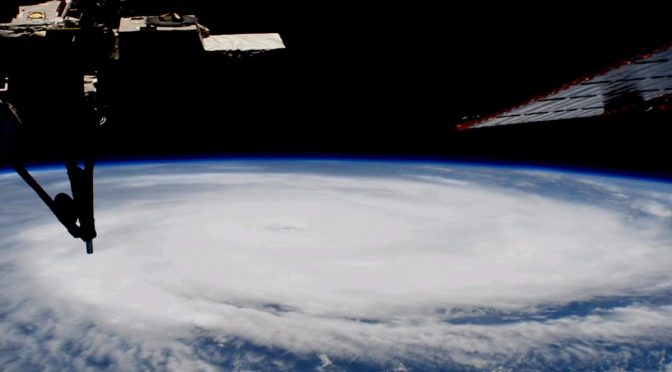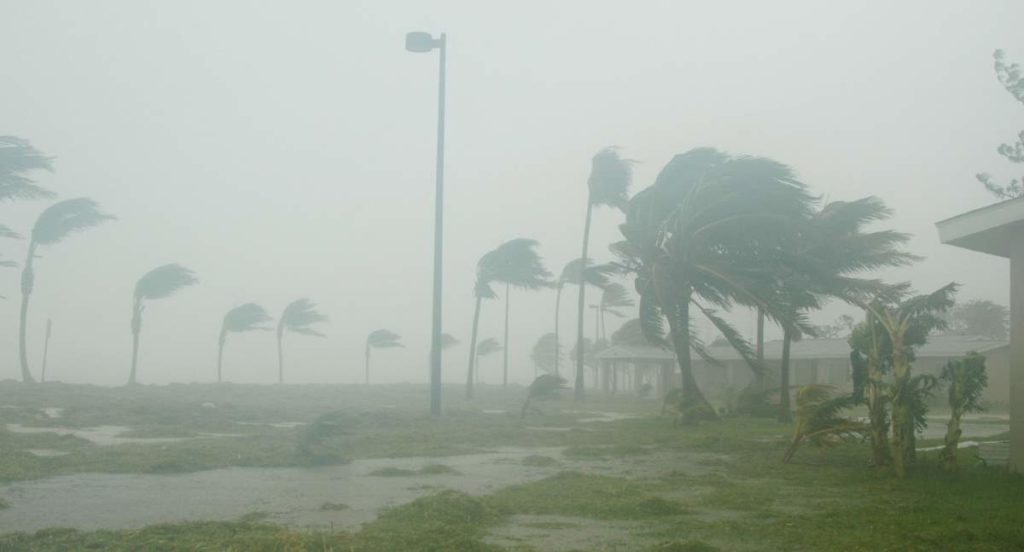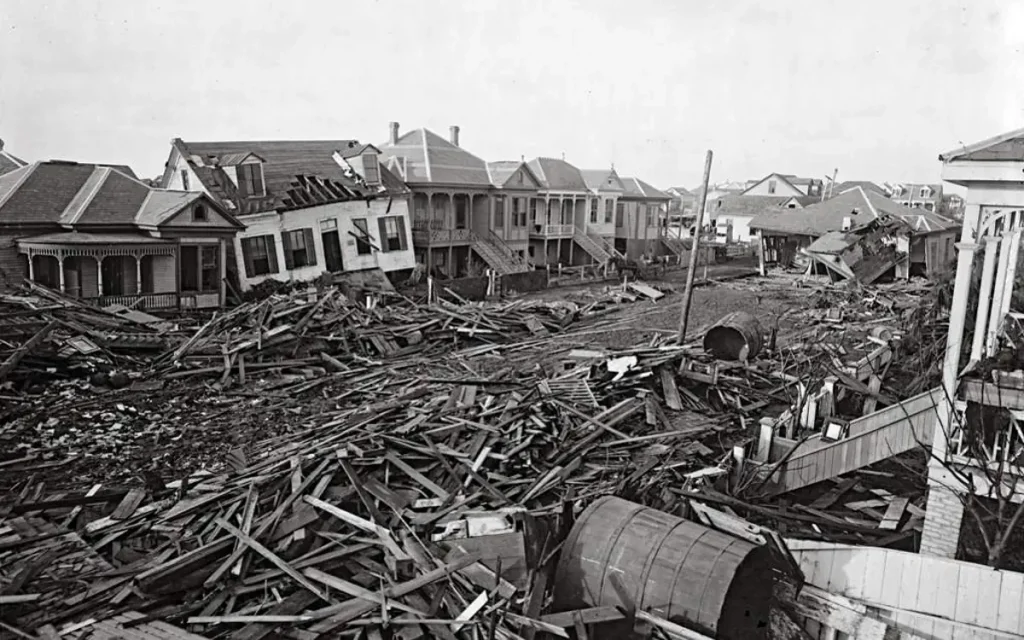Hurricanes are very powerful tropical storms (also known as tropical cyclones). When a tropical storm’s maximum sustained winds reach 74 mph (119 km/h), it is called a hurricane.
Hurricane is actually the name of a tropical cyclone that occurs in the Atlantic Ocean and the northeastern Pacific Ocean. In the northwestern Pacific Ocean; in the south Pacific or the Indian Ocean, for example, hurricanes are usually known as typhoons.
Hurricanes are classified by their sustained wind speed. The Saffir-Simpson hurricane wind scale (SSHWS) is a 1 to 5 rating based on a hurricane’s sustained wind speed. This scale estimates potential property damage.
Hurricanes reaching Category 3 and higher are considered major hurricanes because of their potential for significant loss of life and damage. Category 1 and 2 storms are still dangerous, however, and require preventative measures.
Here are 20 amazing hurricane facts.
Hurricane Facts
1. Hurricane winds can reach speeds of up to 320 km/h (200 mph)
This is strong enough to rip up grown trees from the ground and destroy buildings.
2. They cause extremely heavy rain
A hurricane can unleash more than 9 trillion liters (2.4 trillion gallons) of rain a day.
3. Hurricanes develop over warm water and use it as an energy source
That’s why they lose strength as they move over land. Coastal regions are particularly vulnerable to the impact of a hurricane, compared to inland regions.

Related: What creates the wind?
4. The weather in the eye of a hurricane is usually calm
At the center of a mature hurricane, air sinks rather than rises. For a sufficiently strong storm, air may sink over a layer deep enough to suppress cloud formation, thereby creating a clear “eye”.
Weather in the eye is normally calm and free of clouds, although the sea may be extremely violent.
The diameter of the eye can be anywhere from 3.2 km (2 miles) to over 320 km (200 miles) but they are usually around 30-65 km (19-40 miles).
5. The most violent winds and heaviest rains take place in the eyewall
“Eyewall” is the cloudy outer edge of the eye of a hurricane. The wind speeds are the greatest, air rises most rapidly, clouds reach their highest altitude, and precipitation is the heaviest in the eyewall. The heaviest wind damage occurs where the eyewall passes over land.
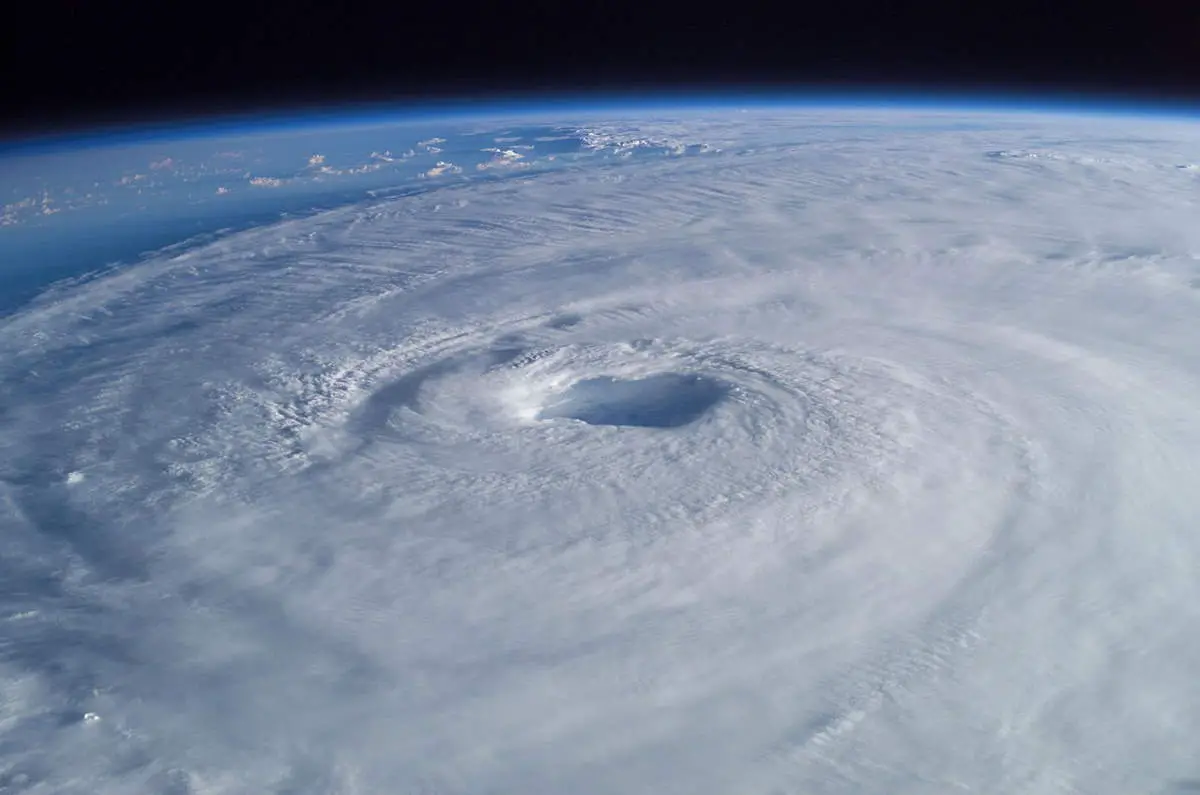
6. A large hurricane can release the energy of an atomic bomb every 2 seconds
A fully developed hurricane can release heat energy at a rate of 5 to 20×1013 watts and converts less than 10% of the heat into the mechanical energy of the wind. The heat release is equivalent to a 10-megaton nuclear bomb exploding every 20 minutes.
Tee “Little Boy”, the atomic bomb dropped on the Japanese city of Hiroshima on 6 August 1945 during World War II exploded with an energy of approximately 15 kilotons of TNT.
So, a large hurricane can release the energy of a “Little Boy” every 2 seconds.
7. Hurricanes rotate counter-clockwise in the Northern Hemisphere, and clockwise in the Southern Hemisphere
The Coriolis effect (or Coriolis force) causes the cyclonic rotation to be in a counterclockwise direction in the northern hemisphere, and clockwise in the southern hemisphere.
8. Hurricanes can produce tornadoes
Hurricanes can produce tornadoes (a rapidly spinning tube of air that touches both the ground and a cloud above). Despite lasting only a few minutes and traveling a few miles before exhausting itself, a tornado can be very destructive.
9. The “storm surge” is the worst effect of landfalling hurricanes
The storm surge is the increase in sea level due to the hurricane. High winds drive the sea toward the shore, causing water levels to rise and creating large crashing waves. Storm surges can reach 6 meters (20 feet) high and extend to over 150 kilometers (93 miles).
10. “Typhoon Tip” was the largest hurricane ever recorded
It occurred in 1979 in the northwest Pacific. With a diameter of around 2,220 km (1380 miles), Typhoon Tip was the biggest hurricane and also the most intense tropical storm ever recorded.
If it had been over the U.S., it would have stretched from Dallas to New York City.
Typhoon Tip generated peak wind speeds of 300 km/h (186 mph).
It was also the most intense tropical cyclone on record, with a pressure of 870 mbar (25.69 inHg), 6 mbar (0.18 inHg)
11. Hurricanes cannot form near the Equator
Because the Coriolis effect initiates and maintains their rotation, tropical cyclones rarely form or move within 5 degrees of the equator, where the effect is weakest.
12. Eyewall replacement circle
Not all hurricane eyewalls look the same, and the size and shape of a particular hurricane’s eyewall often change during the hurricane’s lifetime. In what may be considered a “typical” hurricane, a single eyewall surrounds a nearly circular eye that is mostly cloud-free.
However, eyewalls of strong, long-lived hurricanes sometimes contract over time, during which the maximum wind speed in the hurricane typically increases. Then, a new eyewall may begin to form outside of the original contracting eyewall, often from one of the innermost spiral bands.
When a hurricane has more than one eyewall at once, it is said to have concentric eyewalls. After the outer eyewall forms, the inner (original) eyewall may decay, during which the maximum wind speed in the hurricane typically decreases.
Eventually, the outer eyewall may become the only one left. The new outer eyewall may then begin to contract, leading to another period of hurricane strengthening. This cycle, which may repeat multiple times, is called an eyewall replacement cycle.
Eyewall replacement cycles can have very serious consequences, especially when they occur just before landfall. At great cost to life and property, Hurricane Andrew (1992) unexpectedly strengthened to a Category 5 hurricane while making landfall in southeastern Florida immediately following an eyewall replacement cycle.
In addition to large and rapid intensity swings, eyewall replacement cycles usually cause hurricanes to grow larger. This occurred as Hurricane Katrina (2005) moved through the Gulf of Mexico, resulting in a much larger and more dangerous storm threatening New Orleans.
13. Hurricane names
Hurricanes are given names by the World Meteorological Organization (WMO) so that they can be distinguished.
Each year, tropical storms are named in alphabetical order according to a list produced by the WMO (you can see the full list here). That name stays with the storm if it develops into a hurricane. The names can only be repeated after six years.
14. Until 1978, all hurricane names were female
In 1953, the National Hurricane Center of the United States began giving official names to storms and they were all female. This practice came to an end in 1978 when men’s and women’s names were included in the Eastern North Pacific storm lists.
15. Hurricane names can be “retired”
Hurricane names can be “retired” if a hurricane has been really big and destructive. Retired names include Wilma, Katrina, Andrew, Mitch, and Sandy. See the full list on Wikipedia.
16. Hurricanes are deadly
Over the last 200 years, hurricanes have led to the death of around 2 million people worldwide.
You can check out the Hurricane preparedness guide and a pre-storm checklist that will get you through the season safely.
17. The 1970 Bhola cyclone was the deadliest hurricane in history
1970 Bhola cyclone was a devastating tropical cyclone that struck East Pakistan (now Bangladesh) and India’s West Bengal on November 3, 1970. Between 150,000 and 300,000 people lost their lives (some sources give greater numbers as high as 500,000).
It has officially been declared the world’s all-time deadliest weather event by the World Meteorological Organization.
18. The Great Hurricane of 1780 is the deadliest Atlantic hurricane on record
The Great Hurricane of 1780, also known as Huracán San Calixto, the Great Hurricane of the Antilles, and the 1780 Disaster, is the deadliest Atlantic hurricane on record. Between 20,000 and 22,000 people died throughout the Lesser Antilles when the storm passed through them from October 10-16.
It struck Barbados with winds possibly exceeding 320 km/h (200 mph), before moving past Martinique, Saint Lucia, and Sint Eustatius; causing thousands of deaths on the islands.
Coming in the midst of the American Revolution, the storm caused heavy losses to British and French fleets contesting for control of the area
The hurricane later passed near Puerto Rico and over the eastern portion of Hispaniola. There, it caused heavy damage near the coastlines. It ultimately turned to the northeast and was last observed on October 20 southeast of Atlantic Canada.
19. The 1900 Galveston hurricane was the deadliest natural disaster to hit the United States
The Great Galveston Hurricane was a Category 4 storm, with winds of up to 145 mph (233 km/h), which made landfall on September 8, 1900, in Galveston, Texas, in the United States, leaving about 6,000 to 12,000 dead. It was the deadliest hurricane and also the deadliest natural disaster in United States history.
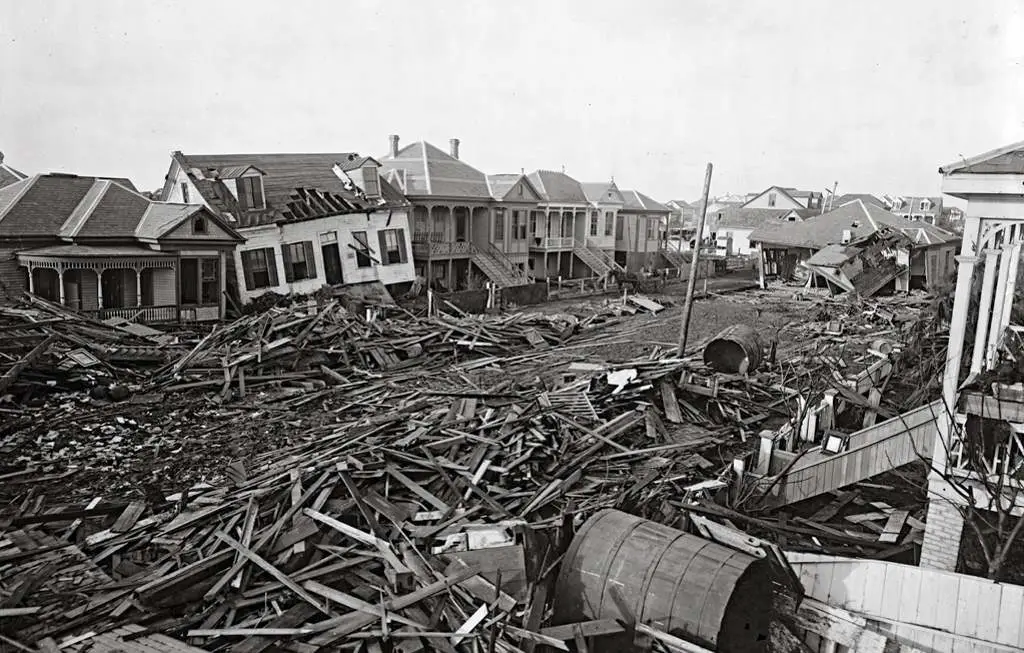
20. Jupiter’s Great Red Spot is the largest storm in the Solar System
Jupiter has a giant hurricane that has been going on for over 350 years: the Great Red Spot.
A century ago, it reached a size of 40,000 km (25,000 miles), about two times the diameter of Earth. Now it’s shrinking: measuring 16,350 km (10,160 mi) in width as of April 3, 2017, it is 1.3 times the diameter of Earth.
In 2019, the Great Red Spot began “flaking” at its edge, with fragments of the storm breaking off and then dissipating.
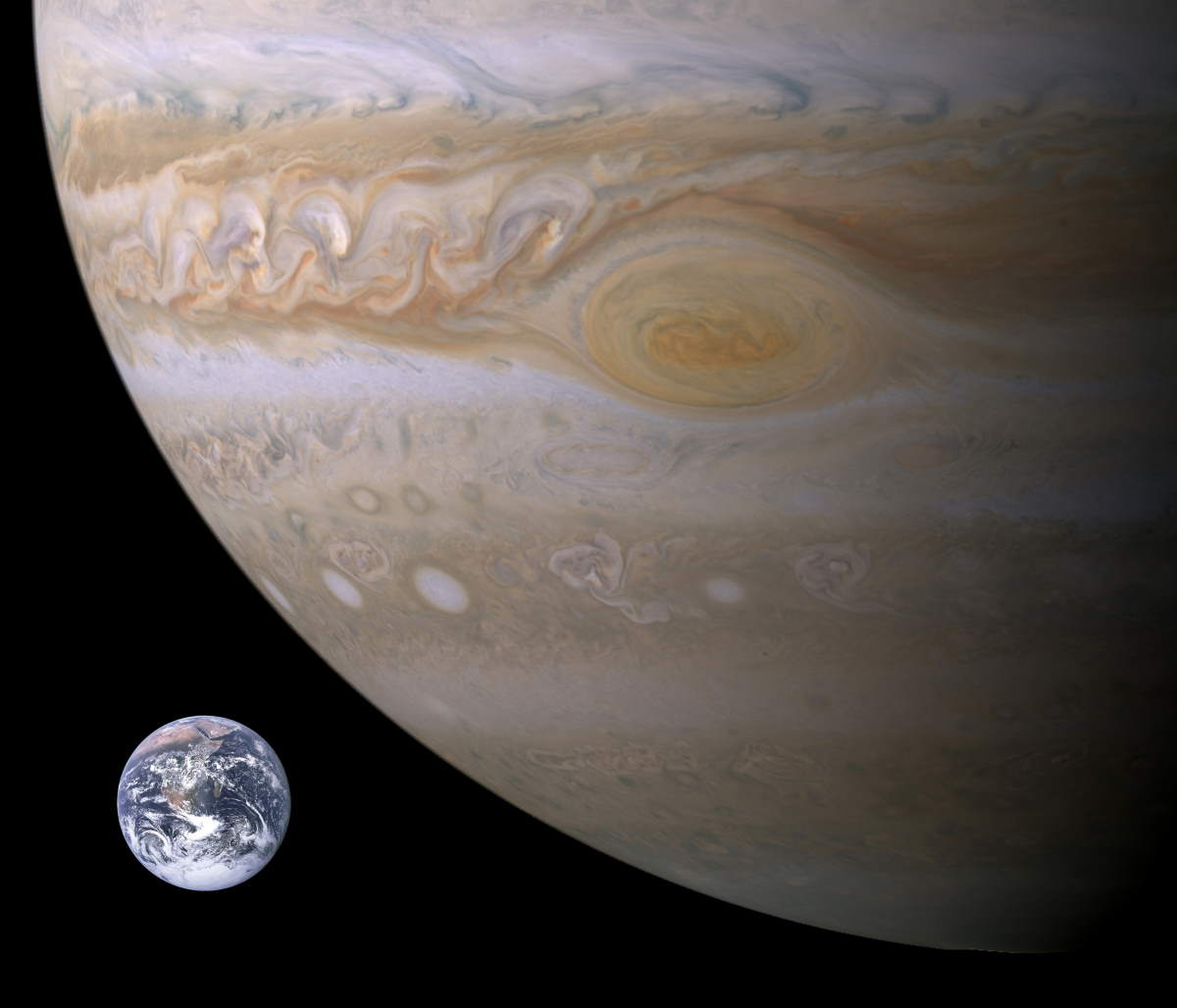
Sources
- What is a hurricane? on the National Ocean Service website
- Tropical cyclone on Wikipedia
- How Hurricanes Form? on the UCAR Center for Science Education website
- Saffir-Simpson Hurricane Wind Scale on the National Hurricane Center and Central Pacific Hurricane Center website
- Why don’t we try to destroy tropical cyclones by nuking them? on the National Oceanographic & Meteorological Laboratory Hurricane Research Division website
- Great Red Spot on Wikipedia
- Hurricane Facts on Weather.gov
- Facts about Hurricanes on dosomething.org
- Ten Facts about Hurricanes on National Geographic Kids website
- Hurricanes: Science and Society on hurricanescience.org
- “Hurricane Guide: What You Need to Know” on the Ward Law Group, PL website
- Moon Landings: All-Time List [1966-2025] - February 2, 2025
- What Is Max-Q and Why Is It Important During Rocket Launches? - January 16, 2025
- Top 10 Tallest Rockets Ever Launched [2025 Update] - January 16, 2025
